Existing User Log In
New User Registration
Register for a free account to gain full access to the VGChartz Network and join our thriving community.



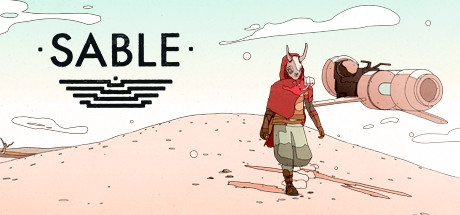

America - Front
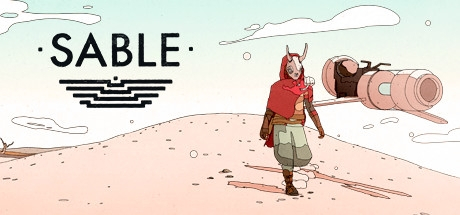

America - Back

Shedworks
Adventure
 (Add Date)
(Add Date) (Add Date)
(Add Date) (Add Date)
(Add Date)
| Owners: | 0 |
| Favorite: | 0 |
| Tracked: | 0 |
| Wishlist: | 0 |
| Now Playing: | 0 |
Cartographer. Merchant. Entertainer. Machinist. In the modern world, these are occupations you may just happen to casually glom onto over time; hell, they might even be side hustles or low-key hobbies. But the land of Midden is not our modern world. Within Shedworks’ vast wilderness, these roles are central in determining what tribe you belong to. Whichever mask you don determines your future. Regardless of the final decision, this special journey of self-discovery isn’t one to forget.
The title character, Sable, is now of age to start The Gliding: a customary rite of passage that’ll eventually culminate in Sable finding herself. Her child mask is replaced with something more appropriate and she’s just a few parts away from her own hoverbike. Reminiscent of The Legend of Zelda: Ocarina of Time, the starting area’s miniature sandbox succinctly marries Sable’s mechanics and context; learning about the gameplay fundamentals alongside the Ibex’s culture. There’s a spiritual significance to this sand-speeder, like a trusty steed you might talk to during long treks. For lengthy stretches, it’ll be the only company you keep across the wide desert.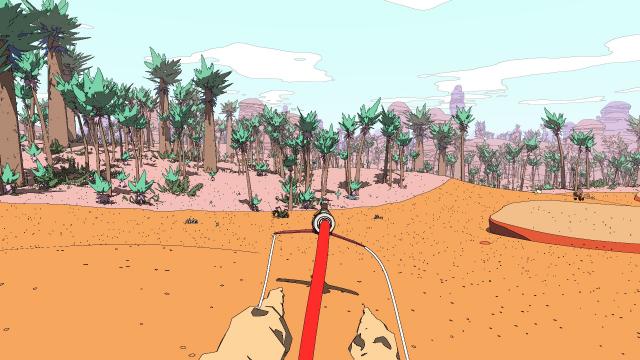
Once the training wheels come off, the mood shifts from Ocarina to Breath of the Wild: Midden’s arid expanse can be approached of your own volition. Upon leaving your nomadic tribe behind, Sable’s given the name of a nearby settlement, with a few tasks that’ll lead her to the next town. But this is only sage advice from your caregiver, not a command. It’s an open world fueled by your own curiosity. The faint silhouette of a crashed starship may be something to mark with your navigator for later while speeding towards a Cartographer’s balloon in a different direction.
Reaching these mapmakers is oftentimes arduous, given how high they’re perched above the dunes. Sable can climb practically anything like modern-day Link, but her stamina bar is limited by design. Given the multiple sphincter-clenching moments of reaching a platform with a mere sliver of stamina left, there’s a perceptible layer of challenge and reward in simply reaching these people and hearing about other landmarks nearby. Their nondescript information is free, but getting a detailed topographical map will cost Cuts. Not being the modern world doesn’t mean it's without a monetary system. It taps into that flow state of open world games: thoroughly excavate areas of interest and succor quest-givers for rewards or money, spend it on various objects (cosmetic or useful to pilgrimage), and repeat.
Despite having that cycle, Shedworks successfully avoids some lesser tropes. By emphasizing heuristic exploration, there’s no issue with being stumped and moving on to something else. There aren’t any invisible barriers nor big floating arrows when you’re leaving a mission area. Perhaps certain climbing segments are better tackled after you’ve increased Sable’s stamina. I’d argue this nonchalant ethos heightens player engagement in these cases too; there’s no judgment in dropping a task on the spot, but you still yearn to slay this dragon another day.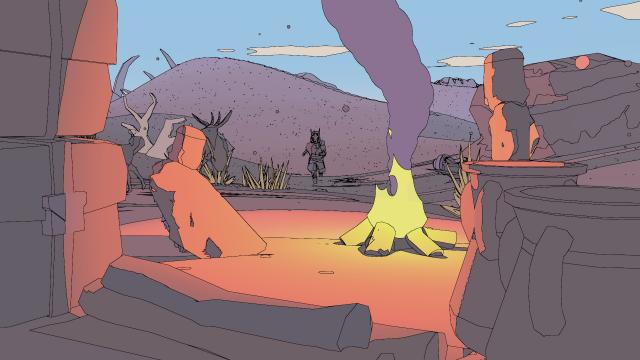
Even if you’ve previously slain said dragon, Sable is also engaging to explore for its unique & wonderful aesthetic alone. Although I’ve said it on occasion, I have a tougher time with the “style over substance” phrase when it comes to certain examples. Whether it’s something like the Cronenbergian Scorn or Sable’s animated Mœbius comic, there’s something invisible yet substantive in scootering past these tall mesas and salt flats that look so rich & distinguished – during the day or night. I was wholly rapt in attention when my first gasp of open air was accompanied by Japanese Breakfast’s vocal track, to a greater extent than Death Stranding’s “Don’t Be So Serious” opening salvo, and it rarely lets up in visual imagination after that. There’s an implicit reward in simply experiencing this prodigious wasteland, like exploring downed spaceships and poorly playing the xylophone on the ribs of long-dead colossi.
Perhaps it’s being too generous to lean on Yet Another Indie Game™ having a hip indie look and soundscape. Beyond the stunning look of its architecture, there’s something so rewarding in simply pushing the climbing to its limits. Granted, it can be too finicky for its own good, but incorporating jank to the freeform climbing gives an extra sliver of empowerment, like you’re unsure if Shedworks even anticipated anyone could reach this or that spot. Contrast that to the… serviceable-but-overdone automation in a modern Ubisoft title and you can feel why the former seems more exciting to exploit.
Tying Sable’s rite of passage with this exploration is also the story’s connective tissue. By making this about a journey of self-actualization, there’s no dissonance in choosing to explore everything, most things, or just a few things. Perhaps ‘your Sable’ quickly knew what role to become, whereas someone else is still hesitant of a final decision after acquiring every mask. Although the logic technically breaks when some side quests inherently instill urgency and you casually decide to handle it a few in-game days later, avoiding the Big Bad trope for a more self-propelled adventure brilliantly harmonizes with its core intentions. There's a video essay or article's worth of material in examining that synergy between character motivation, player-directed pacing, and open-world design.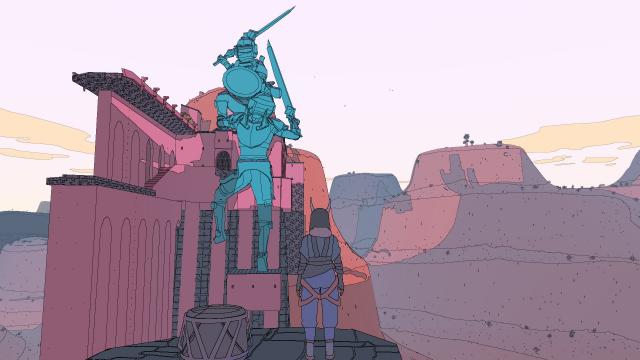
Even though these finer qualities help it stand out, Sable can’t help but be tempted by some standardized open-world ideas. Your quest log is all a flutter after happening upon someone needing a menial task done. Rather than relying on good ‘ole intuition from your compass and some incomplete directions, you’ll oftentimes get a waypoint; pre-emptively purchasing a cartographer’s map before accepting certain quests perfectly pinpoints the marked objective as well. And while the sincere writing succeeds in bringing you further into this world – expertly mixing dialogue with Sable’s internal point of view – it tends to be window dressing for another bog-standard chore in order to get a badge. It also has the standard template of three specially-themed badges to unlock that specific mask.
Not all of its design quirks feel hermetically-sealed, but these foibles don’t disenchant everything going for it. What does severely damage engagement is something more basic and gut-wrenching: technical issues. It’s one thing to wrestle with a meddlesome camera or wonky speeder physics, it’s another to do so with a vacillating framerate. Anyone can have disparate tolerances for this specific issue; even for me as a critic, I’ll admit launch-day Control on Xbox One X could’ve been smoother, but it didn’t utterly sour my experience. Sable is the first really good – perhaps even great – game I've reviewed where poor framerate actively hinders my appreciation. Tweaking the FOV slider made open areas maintain a mostly-consistent 30fps, but did little in a populated city or places with dense foliage.
It’s so damn frustrating because I can sympathize with Shedworks’ typical indie game story: great foundation built on a shoe-string budget. It’s one of those cases where if I were Scrooge McDuck, I’d immediately throw enough funds to polish it to a mirror sheen. No technical distractions; just purely evaluating on artistic merits. But since that isn’t the case - even after patiently waiting for patches - the $25 price point has to be weighed with this context in mind. It’s not as though it’s so bad that it can’t be completed (I powered to the end credits), but it’s rough enough to be refund-worthy.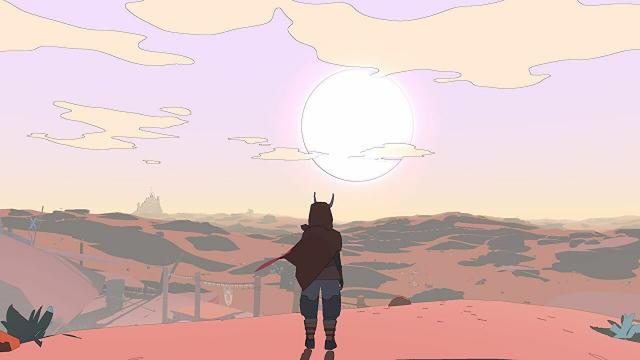
Artistically inspired and technically hobbled, Sable is one of those indie games that’s exciting to evaluate but which I'm still reserved in outright recommending. In its current state, its unforgettable qualities burn at both ends. Think of it as an enthusiastic tentative endorsement: genre fans can level with its rough framerate while the rest should patiently wait for it to be spruced up. I’m (mostly) partial to forgiving a young developer making elementary mistakes when Shedworks seems so mature in other respects. Like Sable’s rite of passage, the hands-off approach lends greater gravitas to a player’s own discoveries. That inherent curiosity feeds into the new people you meet, the ships you explore, the wide plains you traverse, and, ultimately, the role you assume. Although I feel “professionally” compelled to warn about its current nastier faults on PS5, I still sincerely hope you'll embark on The Gliding someday.
Contractor by trade and writer by hobby, Lee's obnoxious criticisms have found a way to be featured across several gaming sites: N4G, VGChartz, Gaming Nexus, DarkStation, and TechRaptor! He started gaming in the mid-90s and has had the privilege in playing many games across a plethora of platforms. Reader warning: each click given to his articles only helps to inflate his Texas-sized ego. Proceed with caution.









